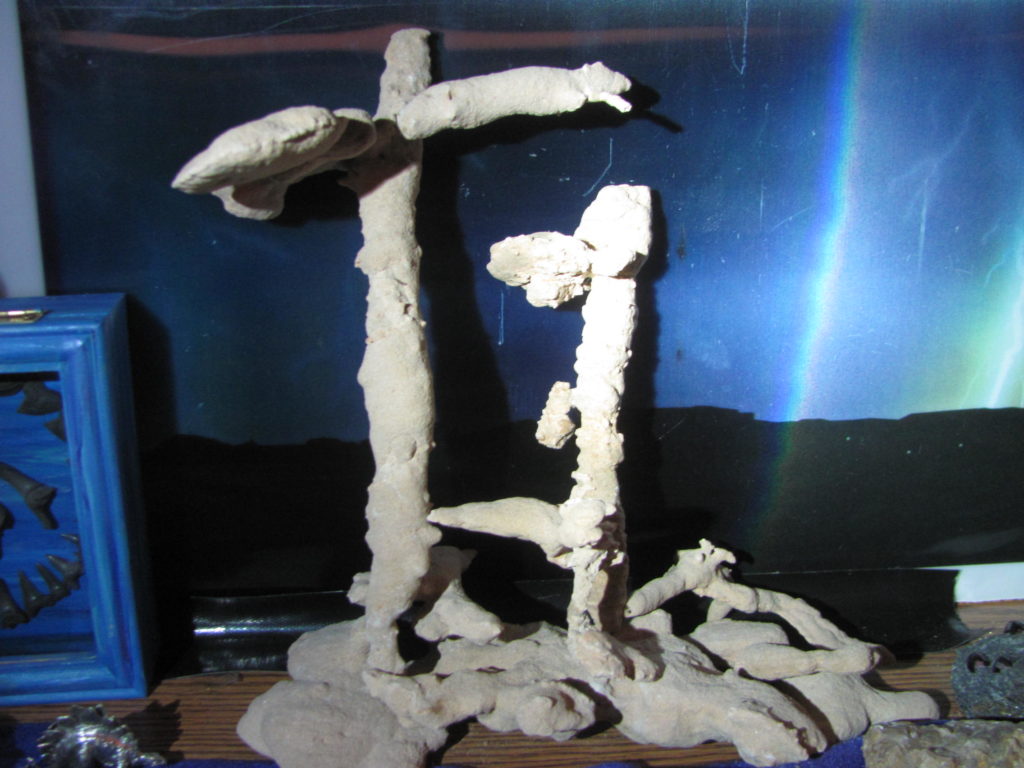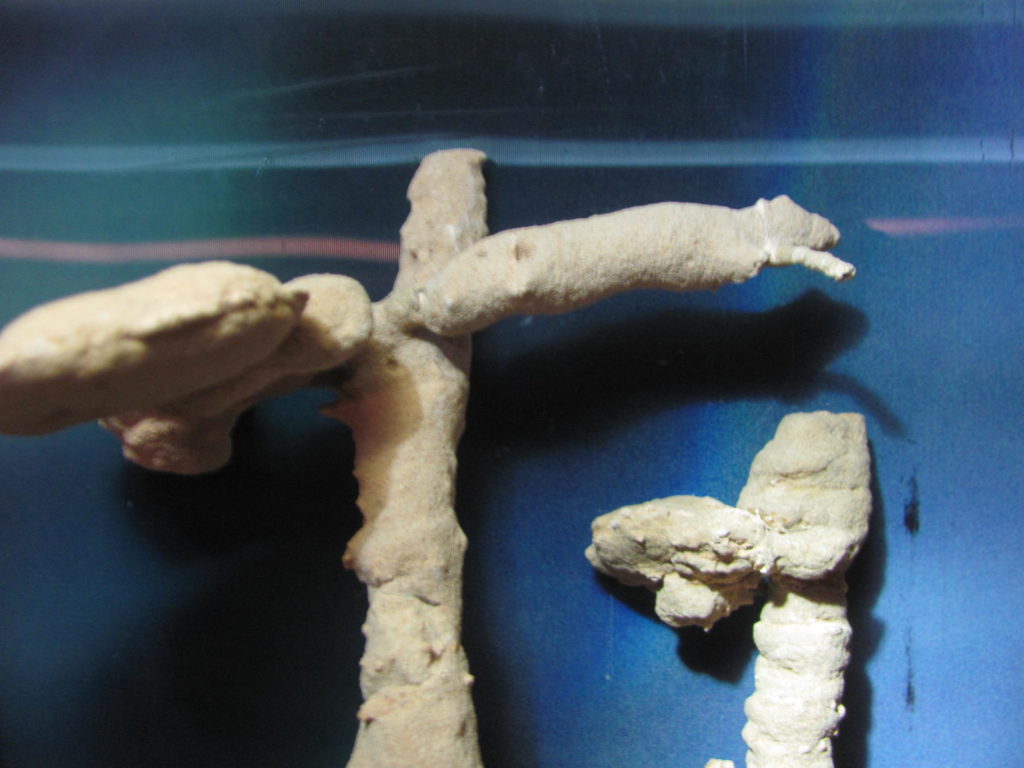Despite the thousands of lightning strikes that have hit our
local area with the storms of the past few weeks, only rarely have they made an
impact visible after the storm passes. Most strikes hit earth or water and
leave little or no sign at all of their passing. Scorched, cracked and split
trees are the most common signs of lightning’s fleeting attention. Lightning
can be destructive, dangerous and even fatal to the unlucky but sometimes, on
very rare occasions, it leaves behind a thing of unique beauty.
When conditions and soil humidity are just right and the lightning strikes
silica bearing ground (sand) with enough energy, the intense heat, pressure and
resultant steam can fuse the sand into intricate and mesmerizing natural glass
structures. These most often take the form of tubes and lumpy bulbs, often with
tiny hollow tracks and spikey exteriors. Because of the inherent fragility of
glass, and the unstable nature of the sand from which they were born, these
wondrous structures often do not survive long with weather and erosion breaking
many beyond recognition in a short amount of time.
Many months ago we had gotten a large load of sand for our property which we then left in our pasture until a recent break in the weather allowed us to finally spread it out. Imagine our surprise when we uncovered strange and interesting rocks amongst the sand pile. Being rock hounds we were pretty sure what these rocks actually were but it wasn’t until we uncovered the entire strike that were certain. We undoubtedly had unearthed lightning made solid, a fulgurite to be precise. And there wasn’t just one either. At least three distinctively different lightning paths had coursed through that single pile of sand. We were thrilled.

Usually, when we want to go rock hounding we have to drive for hours, and sometimes even days, to find likely specimens for our ever growing collection. Our local area only seems to offer clay, mud and sand with the occasional bit of sandstone or calcium nodule thrown in. To find something so down right cool, quite literally in our very backyard, was beyond amazing.

While fulgurites are made of glass it is not the pure, crystal clear material you are used to. Natural sand contains a large amount of impurities. The structures created in such an environment are cloudy, rough and, as you can imagine, coated in a shell of partially fused natural sand. Inside they usually have a hollow core surrounded by a glazed and glassy wall. As the massive electrical output (lightning) tries to seek the path of least resistance through the ground, small pinholes and side pathways can form. To make matters more interesting, sometimes several lightning strikes will occur within fractions of a second in the same area causing some paths to intersect. Nature is awesome!
![]()
